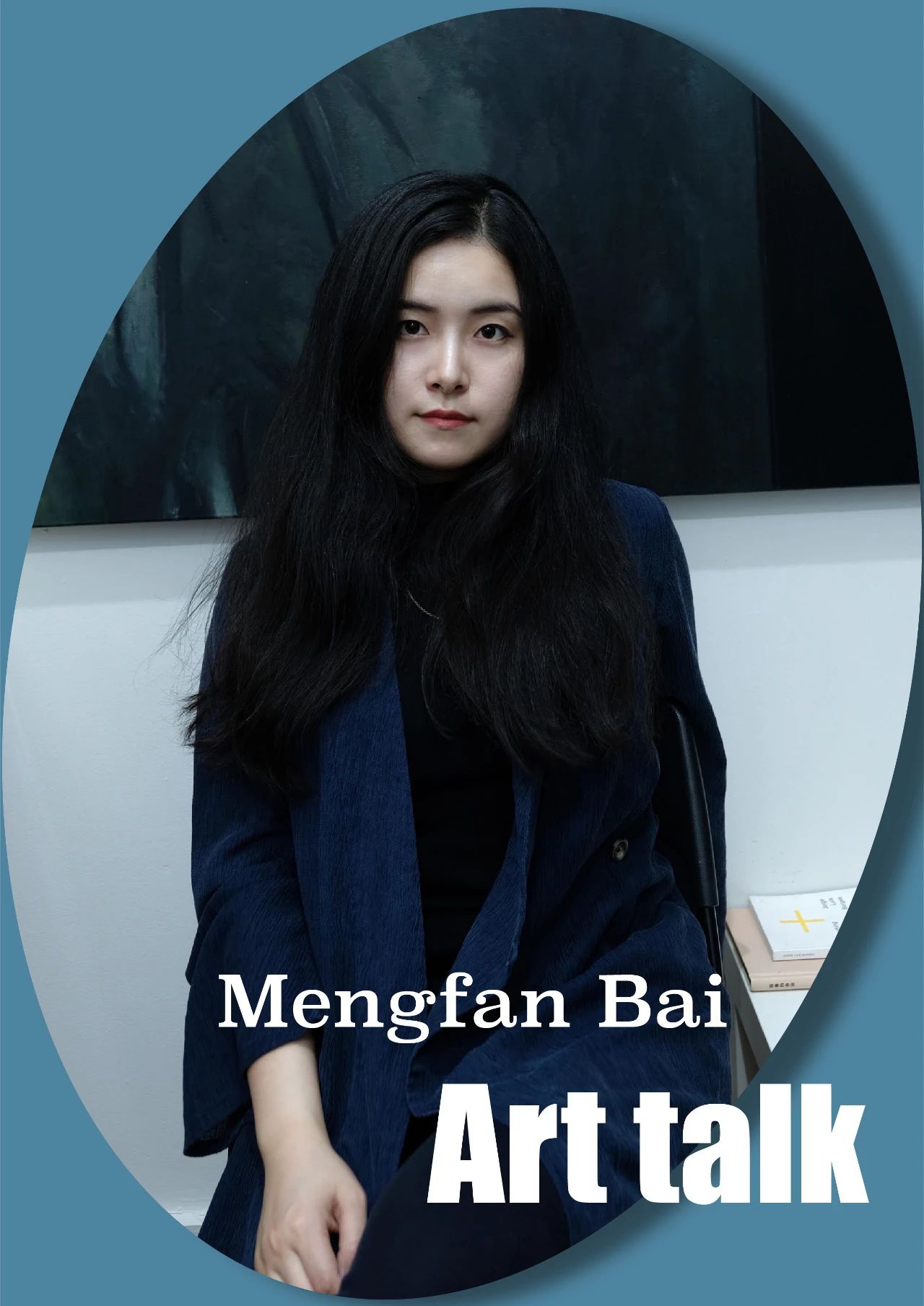
A. In Invisible Cities, Calvino writes, "It's not what you see with your eyes that you're chasing, but what's inside, what has been buried, erased."

Mengfan Bai
Changle Gas Station, 2023
Coarse pumice gel and oil on canvas
60h x 120w x 4d cm
© Courtesy of the artist
I often try to portray in my paintings the most poetic and subtle aspects of the contemporary man-made urban landscape. When I walk in the city, I often look for the unknown order and connection in the smallest details, and capture the microscopic traces left by different human activities in the regular structure of the global urban landscape. In Calvino's The Invisible City, he called the imprints that hide the city's past "the city's palm prints", writing the city's destiny, memories and history in the twists and turns, appearing to converge, but in the depths, there is a different world. In my works, the traces left by time in different places are faithfully reproduced.

Mengfan Bai
Marco texture, 2021
Oil on canvas
23h x 30w x 1.5d cm
© Courtesy of the artist
In my recent works, each group of works tends to revolve around a specific urban landscape, such as city parks, historical buildings, aerodromes, man-made waters and so on. They are not only familiar objects and scenes that have appeared over and over again in my living and travelling experiences, but also my exploration and thinking about "place" and "non-place". The markers of different cities eventually meet and connect with each other on the canvas, just like what Calvino called "the passage that connects the points in the void", and ultimately builds up my galaxy of cities.

Mengfan Bai
25.0966N, 102.9286E II, 2021
Oil on canvas
50h×40w×4d cm
© Courtesy of the artist
Q: What do you think of the element of ‘water’?
A: Beginning with a series of works depicting tennis courts, shades of blue were used so frequently over a period of time that the later stages of depicting the hard texture of the courts instead brought in a lot of imagery of the waters and the observation and understanding of the varying densities of water patterns in rivers and lakes.

Mengfan Bai
L.I.M.B.O 15:12 XII, 2019
Oil on canvas
92h×122w cm
© Courtesy of the artist
It was in 2021 that I really began to paint "water", at that time, I often had to cross the bridge over the East River from my home to my studio, often passing by its high and low tides; I would also go to the Metropolitan Museum of Art to look at ancient paintings regularly, and when I got tired of looking at them I would sit next to the "Nile River" in the Egyptian pavilion. "The bottom of this man-made pool is often glittering with coins from all over the world, and staff are responsible for salvaging them regularly. The disruption of international travel and political tensions at that time are also directly reflected in the change of coins and the number of coins. The coins left in the pool, intertwined with the reflections of the Egyptian frescoes disrupted by the water, prompted me to think about constancy and circulation.
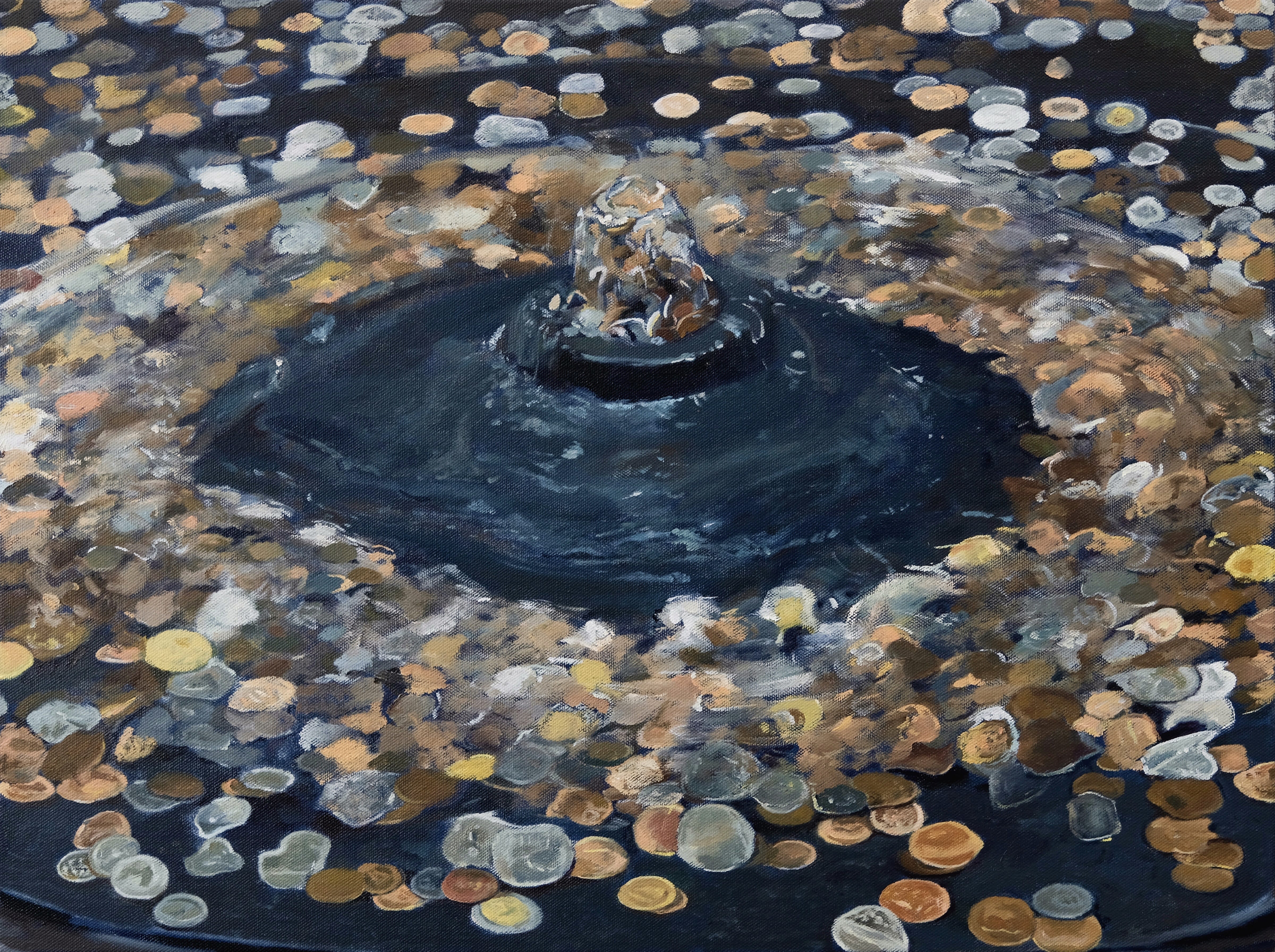
Mengfan Bai
Make a wish, 2022
Oil on canvas
46 x 61 cm
© Courtesy of the artist
Looking back at these three years of flux, the element of water in my work seems to be a metaphor for the inner turbulence of a troubled society. However, these three years were also the most stable period in terms of physical coordinates in my past life experiences, and perhaps the depiction of water also incorporates my understanding of impermanence and formlessness. Like Bruce Lee once said, "Be water, my friend."

Mengfan Bai
Nile IV, 2024
Oil on canvas
50h×40w×4d cm
© Courtesy of the artist
Q: Why do you choose oil painting?
A: At first I thought it was the oil painting that chose me, but as I practice day by day, I become more and more convinced that it is my initiative to express myself in this traditional and solemn way.
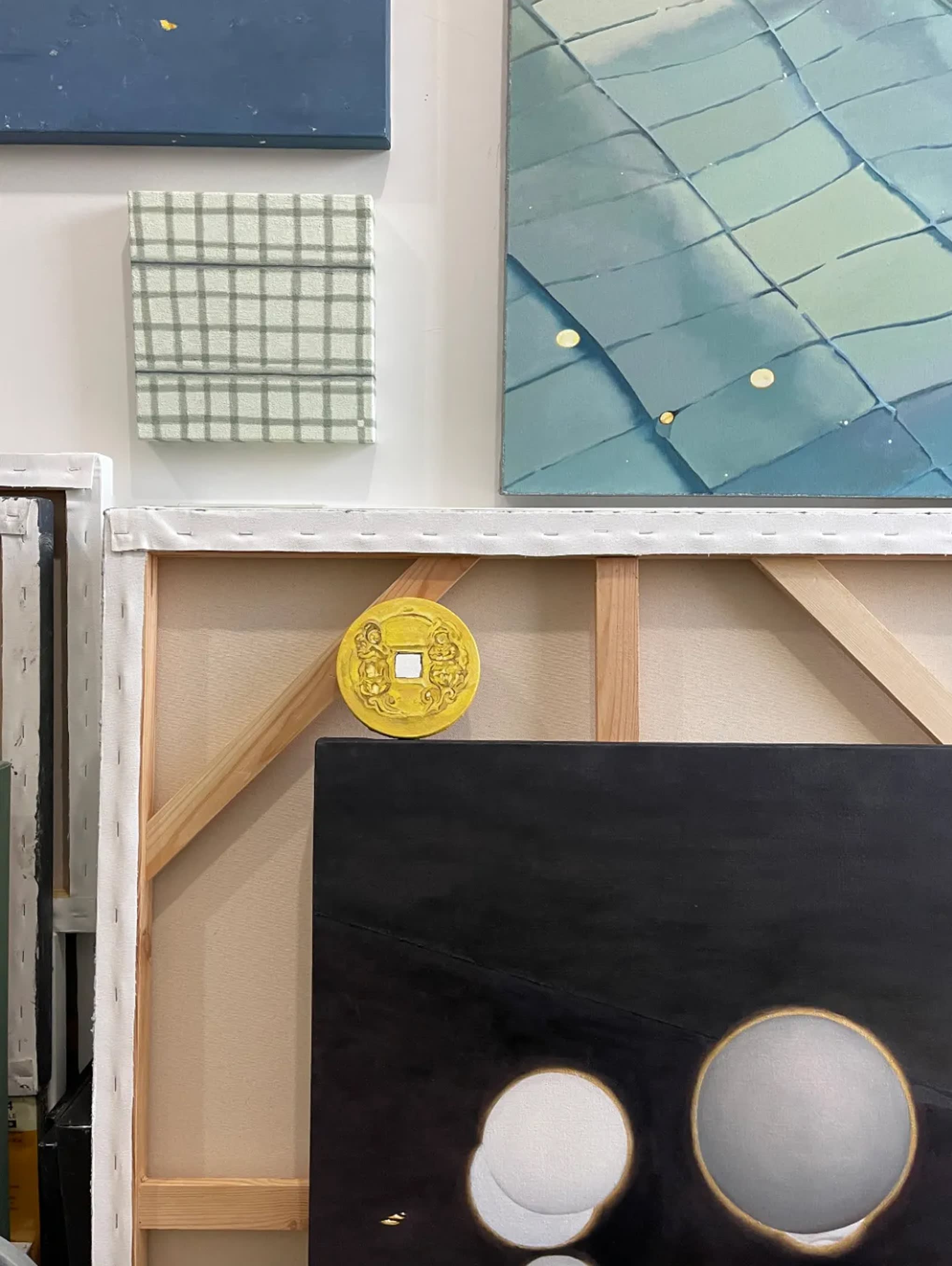
Artist Mengfan Bai's studio © Courtesy of the artist
The character for "painting" resembles the boundaries of a field, which is translated in Shuowen Jiezi as "to draw a boundary line with the brush". A piece of canvas is like a new field, and the creator needs to stand up or bow down to return to this area to plough it again and again within a period of time. The beauty of the texture of the oil painting material merges with the land in my memory.
The process of oil painting is also very similar to that of architecture. First there is the skeleton and structure, then the muscle base. After repeated sanding the paintings and modifications on the canvas are hidden under layers of colour. Painting and architecture move me most as containers of time.
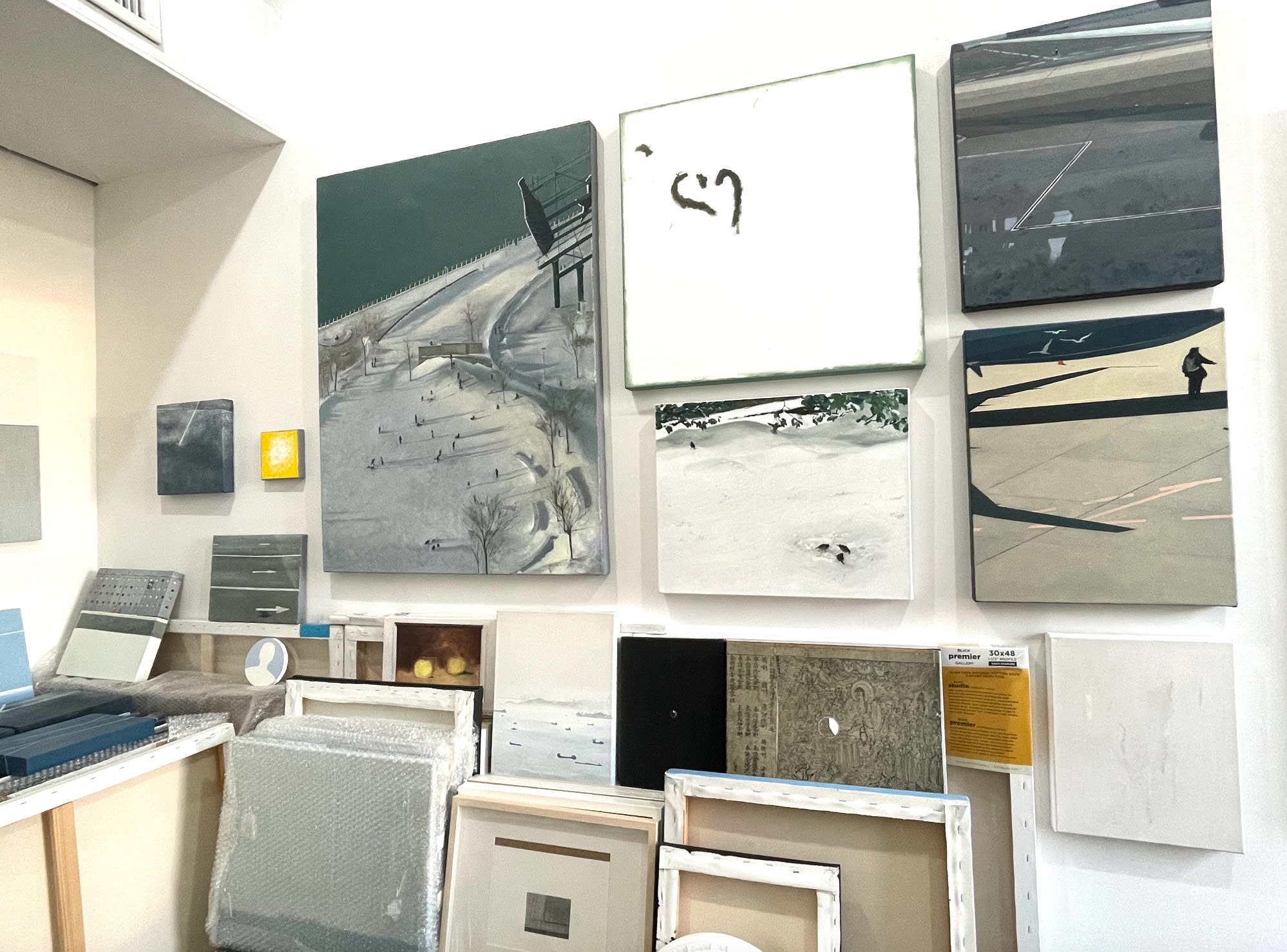
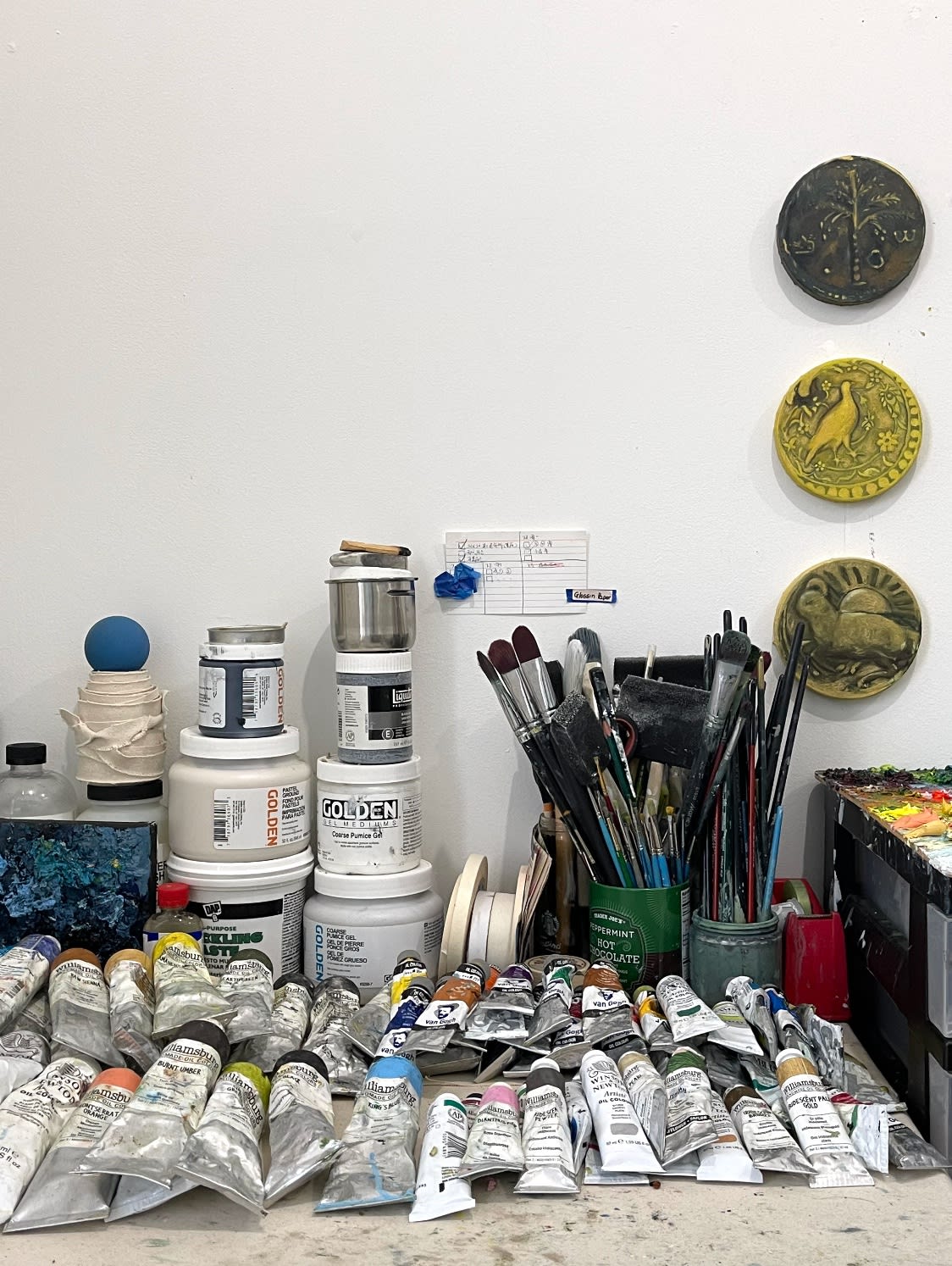
Artist Mengfan Bai's studio © Courtesy of the artist
Q: What emotion would you most like to convey through your creation?
A: "A lone sail in the blue sky", "The snow filled the mountain road in heaven when I went there", and "Today's man does not see the moon of ancient times, but today's moon once shone on the ancients."
These are the first few lines of poetry that came to my mind when I read this question.
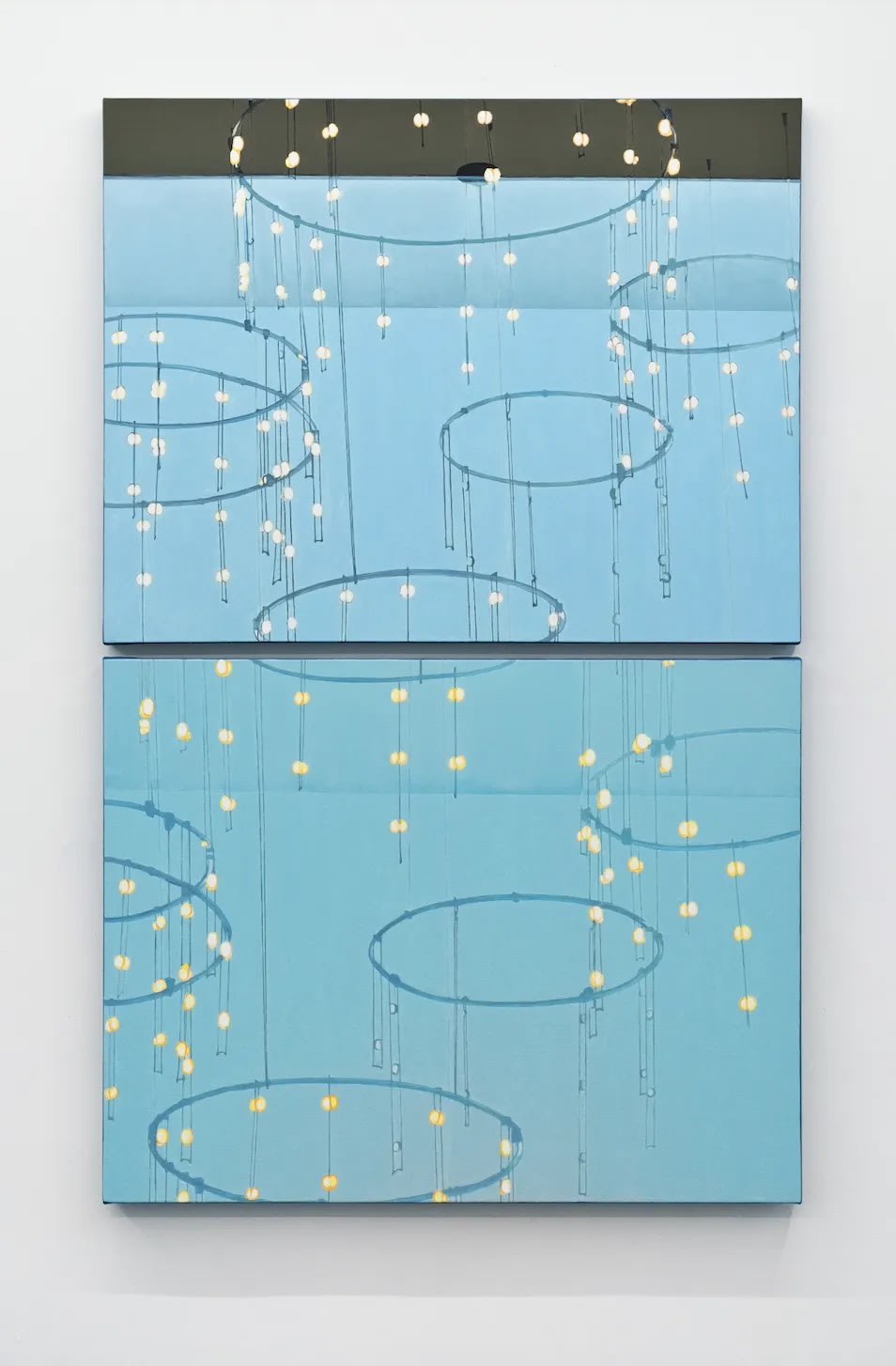
Installation view of Thus Have We Seen, February 29, 2024 - April 14, 2024, Nan Ke Gallery, Shanghai © Courtesy Nan Ke Gallery, photographed by AHstudio
In classical Chinese poetry, poets often choose to describe a particular situation to express their feelings and sentiments. Gong Xian said, "The world is full of strange and dangerous places. Non-painter writing, old and dead under the lattice can not be seen. However, there is no need to be in the world is also, where the painter's chest are in the world also have." The influence of classical Chinese aesthetics is that it is not the content of the painting that is more important to me, but the way of looking at it. When I paint urban landscapes, what I try to depict with my brush is the "portrait" of these landscapes under my gaze. I want to use my own five senses as a medium for storing urban memory, and use different geographical coordinates as an index to restore the original appearance of the city with my brush, at a time when the definition of the "city" has become more complicated and blurred.
Just like Cézanne's portrayal of Mont Sainte-Victoire, we can see the same solemnity, sublimity, simplicity and order in his countless portrayals, as if he could break the limitations of time and space. He once said "The landscape contemplates itself in me; I am its consciousness." This active transformation and interaction between landscape and human perspective has brought great inspiration to my painting.



